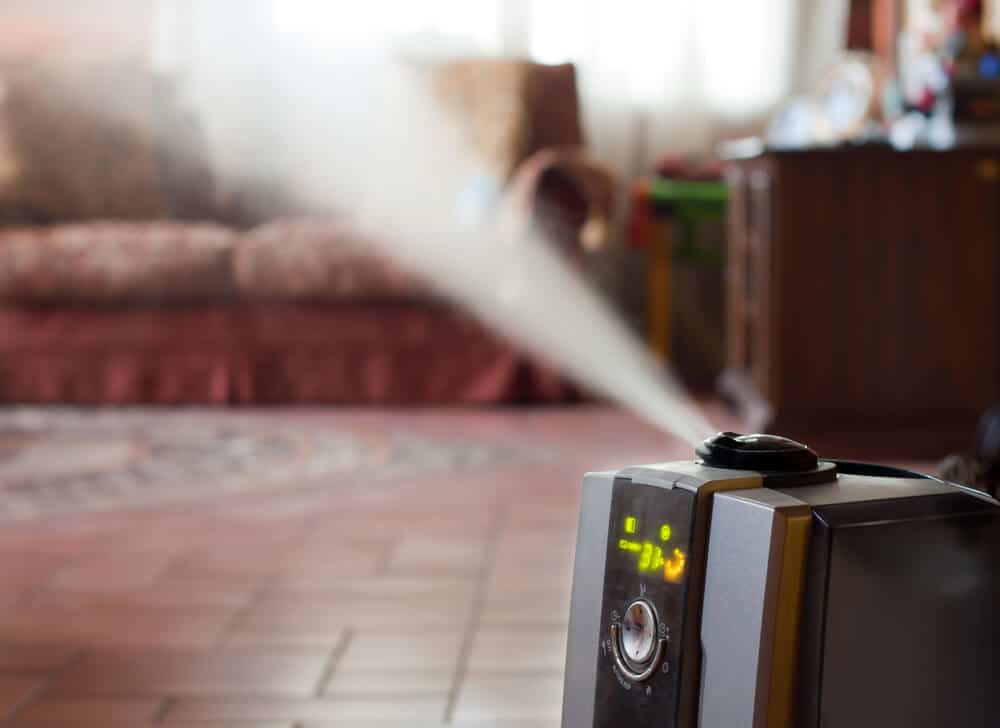You shouldn’t think of an air purifier as just some fancy air conditioning system that does little more than improve your indoor air quality; it’s considerably more. If you select the right air purifier for your home, it can enhance the quality of your life and potentially ward off serious diseases.
In this article, we are going to walk you through how to use an air purifier to get the best results. We’ll explore how air purifiers work and how to use them most effectively.
How do air purifiers work?
Essentially, an air purifier is a filter or several air filters, combined with a fan, that sucks in and then circulate the air.
As air passes through the filter, it captures pollutants and particles, leaving “clean air,” which is then pushed out of the purifier back into the room.
HEPA is important in the world of indoor air purifiers. It stands for High Efficiency Particulate Air. HEPA filters work by capturing particles within a multi-layered netting, which is often made with very fine fiberglass threads. The HEPA filter is airtight. It’s randomly placed fibers causes particles of all sizes to be captured by either crashing into the fibers or by diffusion.
A true Hepa air purifier is very good at dealing with dust mites, airborne particles or airborne allegations, and indoor air pollution in general.
There is another type of air purifier that uses ionizers to attract particles by taking advantage of static. It uses negative ions to bond to dust and allergens. Be sure to choose an air cleaner that does not produce ozone because it’s a known lung irritant. You don’t want a lung irritant in the home generally, but especially for people suffering from asthma.
Be aware that air purifiers won’t completely eradicate mold spores. If mold growth is one of your primary concerns you want to research dehumidifiers or humidifiers, they’ll help keep moisture levels at the right level. Air purifiers can help to remove odor from the air but won’t reduce mold growth, unfortunately.
Knowing which air purifier is best for your home is essential. Likewise, you’ll want to pay attention to the CADR rating which relates to how quickly an air purifier can clean the air of the room it is situated within.
Other important questions you’ll need to answer before you make a purchase include:
- Do you have to contend with pet dander?
- Do you have an HVAC system?
- Does anyone in the home suffer for allergies?
- Are you dealing with volatile organic compounds?
- Is Radon an issue?
There’s a lot to consider, and you need to take air purification seriously. But once you have bought your air filter, you must know how to use it effectively.

How to Use an Air Purifier Effectively
You could have the best air purifier on the market, but to get the most benefit out of your home air purifier, we recommend you follow these steps.
1. Location – For proper air filtration, air purifiers need space to breathe. If you want quality air, ensure you have a few feet of clear space on all four sides, this allows the purifier the opportunity to be in contact with air pollutants. You can’t hide it away; it needs to become part of the room.
2. Pointing the flow in the right direction – To be clear, make sure the flow of clear air is directed to where you can get the most benefit from it. This is a less of a concern in smaller rooms such as bedrooms.
3. Keep it turned on – Asthma sufferers or homes where there will be tobacco smoke may need to keep the air purifier turned on. The same goes for homes in high smog areas or with a lot of dust particles. You can change the fan speed, decrease the clean air delivery rate, but don’t turn it off.
4. Keep windows and doors closed – Having access to outdoor air means the air purifier works far less efficiently, even a HEPA type air purifier.
5. Change the filters regularly – This is not your standard home appliance; air purifiers need to be maintained. Make sure you have a supply of replacement filters at home. Regular air purifier filter replacement keeps the air flow clean. We highly recommend you change the activated carbon filters regularly.
Is it expensive to use an air purifier?
HEPA air purifiers consume 50 to 200 watts of electricity, depending on the model. That’s not actually a whole lot and the Environmental Protection Agency believes the benefits far outweigh the impact of using energy.
Putting this into context, your average lamp will require approx 60 watts whereas a computer could use 365 watts. That seems reasonable in return for removing your home of airborne allergens.
However, if energy consumption is something you are worried about, you may want to consider researching a model that is an Energy-Star rated air purifier.
The initial investment of an air purifier can be expensive for some, but the day-to-day running expenses are not as costly.
Conclusion
Air purifiers work by sucking air into the purifier, with the allergen and airborne allergens also in the air. Purifiers then use well placed, airtight fibers that collide into the airborne particles and trap them, pushing out the clean air. There are other variations; some use ionizers, for example, but the goal is always the same.
Once you’ve picked out your air purifier, it’s important to use it and take care of it properly. For a start, positioning it in an open space with good air flow will get the most from this new home appliance.
You don’t want it to be obstructed on any side, and you want the clean air to flow into the main areas of the room in order to produce optimum indoor air quality.

